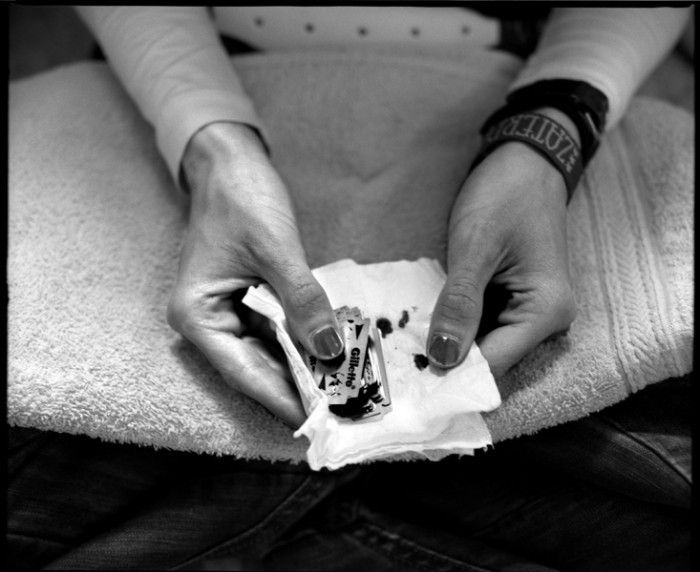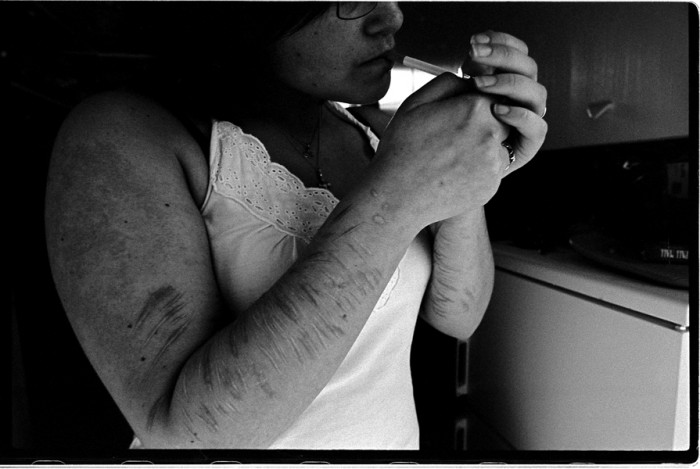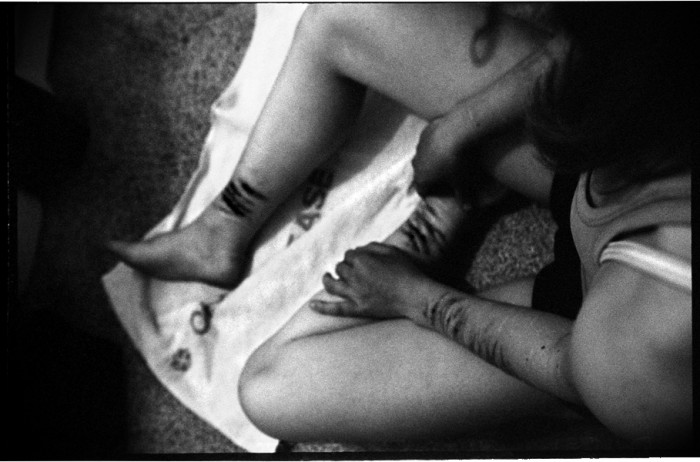The Cutting Edge
-
PhotographerMaaike Hermes, Netherlands
-
Website
Self-harm comprises all behaviour in which injury is inflicted upon the own body, e.g. cutting, burning, scratching, head banging, overdosing and taking poisonous substances, regardless of intent. One in every twenty adolescents between the ages of 15 and 20 has inflicted some form of self-harm. Among adults between the ages of 18 and 34 this is one in every 35. The nature of the injuries that people inflict upon themselves reveals little about the reasons for self-harm. Behind a slight injury a death wish might hide, whilst the taking of many pills might be a cry for help. Only when it is known why a person inflicts self-harm, the gravity of the situation can be assessed. However, people who inflict self-harm usually do so in secret. Shame plays a large part in this. Only a small percentage seeks help, which causes the scale of self-harm to remain obscure. It is known that self-harm increases during puberty and reaches its peak at the age of fifteen. Without help the self-harm will become worse. Moreover, self-harm is a strong indicator of suicidal tendencies. Research shows that self-harm is often an impulsive act, it follows on rows with parents or partner, on the break-up of a relationship, or on problems at school or at work. In many instances, self-harm occurs in the context of depressive complaints, anxieties and behavioural problems. Moreover, people who inflict self-harm have often gone through many very painful and shocking experiences, such as sexual or other abuse within the family.




